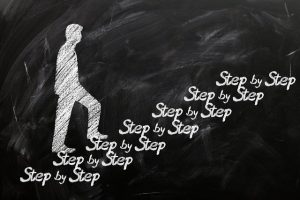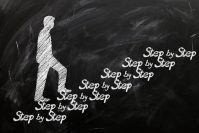 Over the years, we noticed that some clients made very noticeable progress. These were motivated clients with strong learning habits. They were fascinated with language and creative in finding ways to fit their practice into their busy lives. They focused in class, turned off their phones and had clear goals.
Over the years, we noticed that some clients made very noticeable progress. These were motivated clients with strong learning habits. They were fascinated with language and creative in finding ways to fit their practice into their busy lives. They focused in class, turned off their phones and had clear goals.
In contrast, there were others who made relatively little noticeable progress. It was easy to attribute this to experiencing an overload of work and family commitments limiting their progress, to not really having a personal interest in making a change, to being older and less flexible than when younger, etc.
But in questioning and exploring these issues – and with the great desire to be effective in our work – we realized there were many things we could do beyond simply teaching communication skills. This meant adding in a coaching orientation to support clients in achieving clarity on where they wanted to go and how to get there, as well as preparing them for an effective and successful learning experience.
We came up with what we called the GRADE approach – an acronym for five aspects we focus on: Goals, Resistance, Attention, Decision, and Effective methodology
Goals
An initial step is to make sure the client has clear, measurable and realistic goals and expectations. It means looking at where they are currently and where they personally feel the need and desire to move forward.
This can be complicated by what HR or their manager feels they need to work on. Navigating these different agendas can be complicated, so particular attention needs to be paid to understanding the needs of management and how they relate to job performance. I have found that framing this within the context of behavioural flexibility and the opportunity to choose a behaviour as needed seems to work well.
Resistance
There are so many reasons for someone to resist training or not be able to move forward. All of us have what cognitive neuroscientist, Caroline Leaf, calls our “mental mess.” And there are many ways to sort through these issues. Developing self awareness is the first step.
As a coach, it can be important to clarify what might hold the client back. While sometimes such resistances and mental patterns are complicated, often there are relatively simple approaches to developing awareness and establishing habits that support the learning process.
If the coach and/or client identifies a behaviour that is limiting the client’s ability to learn effectively – for example, a tendency towards negative self-talk, an us/them attitude or a feeling of overwhelm – it may be useful to explore ways to increase self-awareness, develop alternative thought patterns and look at practical approaches to managing these concerns.
Attention
Often clients come to class directly from a meeting, or a string of meetings, rushing from one thing to another. They may be agitated, unfocused, distracted or upset. These feelings make focusing and learning almost impossible. This unfocused attention also impedes the ability to participate effectively in homework or simply developing self awareness regarding one’s habits and behaviours.
As an example, one approach we use to increase focus is using the breath. The power of the breath is immense – calming the nervous system, lowering stress, creating rapport, increasing concentration, etc. We all know how easy it can be to get worked up, resulting in shallow breathing, tension in the body and difficulty being thoughtful and clear in our interactions.
Simply remembering to take a breath helps anyone pay attention. Breathing before responding will help the client slow down and speak more intentionally and more clearly. In class, we help the client shift from an agitated state into a calm, attentive state by using a bit of music and deep, slow breathing to improve the learning state.
Decision
To change an ingrained communication habit involves commitment and time. The first step to commitment is deciding. Once the decision is made, it is simply a matter of moving forward one step at a time.
It is important to be realistic with what can be achieved and how much time will be dedicated to reaching this goal. Knowing that the learning process can be adapted to the schedule of the client and finding ways to break it into manageable bites can help. The key is to commit to a goal and focused practice, whatever that involves.
Effective Methodology
Learning techniques, practicing a skill, reviewing regularly, applying the skill to real life – there are many steps to becoming proficient and re-programing our automatic responses. With an effective methodology, clients can optimize time spent on learning and practicing.
At Voice to Word, we teach a step-by-step approach to practice and review, incorporating the client’s creativity and a process called “Make it Your Own.” This starts with learning individual pieces – a sound, word or cultural value. These pieces are practiced in different positions or groupings. Up to this stage, the process is technical and drilled. Next, context and creativity take over. What can easily be remembered or repeated mechanically needs to integrate with our thoughts, interacting with our habitual communication behaviours and practices, which can distract us from the technique or approach. You can read more about this approach by reading our blog post – The Make it Your Own Process.
I always tell my clients that when they notice themselves self-correcting during real-life situations, it is always a good sign – a sign that the mind is beginning to integrate the new communication habit.
Changing how we communicate can seem like an impossible task given how ingrained our habits are. But with an effective approach and consistent practice, it can be done.

